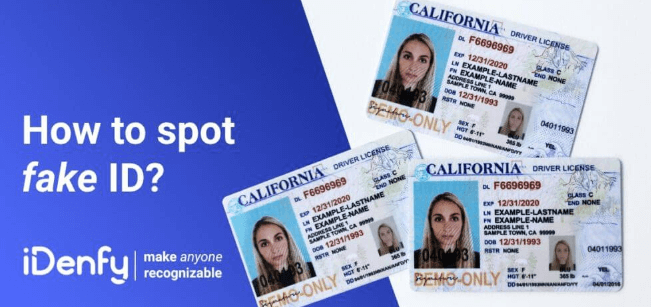As the age-old adage goes, “Fake IDs till you make it.” But when it comes to IDs, this saying isn’t one to live by. While many young adults try to purchase alcohol using a fake ID, proprietors must take this matter seriously. Not only does selling products to minors violate the law, but it also threatens the safety of everyone in the establishment when customers who have had too much to drink become unruly. But fear not – spotting fake id is easier than you think. Here’s how to do it effectively and in seconds.
1. Look for Holes and Scuffs:
One of the most reliable ways to spot fake IDs is to check for holes or scuffs. If the ID is counterfeit, it’s likely to have blemishes, scratches, or even holes made to try and make it look authentic. This is typically where people try to punch holes for their lanyards, or where scuffs arise from getting stored in wallets. People who have to resort to forgery often don’t possess the right tools required to create an ID which looks flawlessly authentic.
2. Check the Material:
Real IDs are not printed on paper, so if the ID in question is on paper, there’s likely something fishy going on. A legitimate government-issued ID should feel thick and sturdy to the touch, not flimsy or fragile. Besides, authentic government IDs are typically made of polycarbonate, which is virtually impossible to replicate.
3. Inspect the Holograms:
Since most government-issued IDs have security holograms embedded in them, checking the presence of such holograms is a sure-shot method of identifying a fake. These holograms are intricate and challenging to reproduce. Additionally, it’s a good idea to tilt said hologram in different directions to check it’s legit.
4. Compare it to Other IDs:
If you’re unsure if the ID you’ve been handed is authentic, it’s worth comparing it to another ID that you know for sure is real. Check if they have any markings or designs that are missing on the one you’re examining. Take note of differences in placement, font, image resolution, and overall quality.
5. Observe the Details:
Ensure that the ID in question is up-to-date, has no misprints, and matches the physical features of the person holding it. Some fake IDs try to replicate older versions of real IDs, so always double-check for the latest, accurate versions. Additionally, make sure that all the details such as the name, date of birth, license number, and excretion date match the information on their government records.
Whether you’re a bouncer at a club or an employee at a convenience store, it’s essential to know how to spot a fraudulent ID to avoid unwarranted legal or safety consequences. With these simple tips, you can quickly determine whether an ID is legitimate or illegitimate. Remember, fake IDs are made to complete, whereas real IDs are constructed to be unfakable and resistant to fraud, so it’s all in the details. Be aware, stay vigilant, and never hesitate to check twice if you are at all unsure.
First and foremost, check the ID for any signs of tampering. Fake IDs may have raised text or even slight discoloration, which is a clear indicator that it has been tampered with. Also be aware of certain fonts or print styles that don’t match state-issued IDs, like larger headings or different cartouches. Next, look for any discrepancies between the ID and the person who is presenting it. A mismatch in height, eye color, birth date or other information should prompt you to take a second look.
Finally, check for signs of age-related wear and tear on a real state-issued ID. Over time, these IDs will start to show signs of fading, warping or peeling. Fake IDs are usually printed on thicker materials and therefore tend to stay in good condition longer than a legitimate ID would. This can be a tell-tale sign that it’s not the real deal.
First, take a look at the ID’s background. Legitimate IDs have intricate patterns or watermarks that are embedded in the card and difficult to replicate.
Next, check the photo. Fake IDs often have photos that are either visibly different from the ID holder or won’t match up with other images printed on the same card. Additionally, ensure that all of the details like color in both the photo and text portions of the ID match up.
Finally, review the card for signs of tampering or alteration. Fake IDs may have misspelled words, incorrect dates or ID numbers that don’t match up with other details on the same card. Look for signs of gluing to make sure no elements of the card were added after issuance.
you can quickly and easily verify a person’s identity using their ID card information. Verifying IDs is an important part of making sure that transactions between individuals are secure and trustworthy. Taking the time to check IDs can help keep all parties involved safe.
you can help to protect yourself and others from fraudulent activity involving fake IDs. As always, when in doubt, don’t accept the ID and contact the appropriate authorities if necessary. By staying vigilant and following these steps, you can ensure that you’ve done everything in your power to protect yourself, your identity and those around you.





